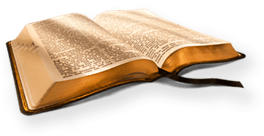King James Bible
King James Version (KJV)


"(Heb. tamar), the date-palm characteristic of Palestine. It is" "described as "flourishing" (Ps. 92:12), tall (Cant. 7:7)," upright (Jer. 10:5). Its branches are a symbol of victory "(Rev. 7:9). "Rising with slender stem 40 or 50, at times even" "80, feet aloft, its only branches, the feathery, snow-like," "pale-green fronds from 6 to 12 feet long, bending from its top," "the palm attracts the eye wherever it is seen." The whole land" "of Palestine was called by the Greeks and Romans Phoenicia," "i.e., "the land of palms." Tadmor in the desert was called by" "the Greeks and Romans Palmyra, i.e., "the city of palms." The" finest specimens of this tree grew at Jericho (Deut. 34:3) and Engedi and along the banks of the Jordan. Branches of the palm tree were carried at the feast of Tabernacles (Lev. 23:40). At our Lord's triumphal entrance into Jerusalem the crowds took "palm branches, and went forth to meet him, crying, "Hosanna:" Blessed is the King of Israel that cometh in the name of the "Lord" (Matt. 21:8; John 12:13). (See [457]DATE.)" "The name given to Jericho (q.v.), Deut. 34:3; Judg. 1:16; 3:13."
Related Bible Dictionary Terms:
Bay tree Chestnut tree Palm trees The city of Pine tree Plane tree Sycamine tree Teil tree Tree of life Tree of the knowledge of good and evil